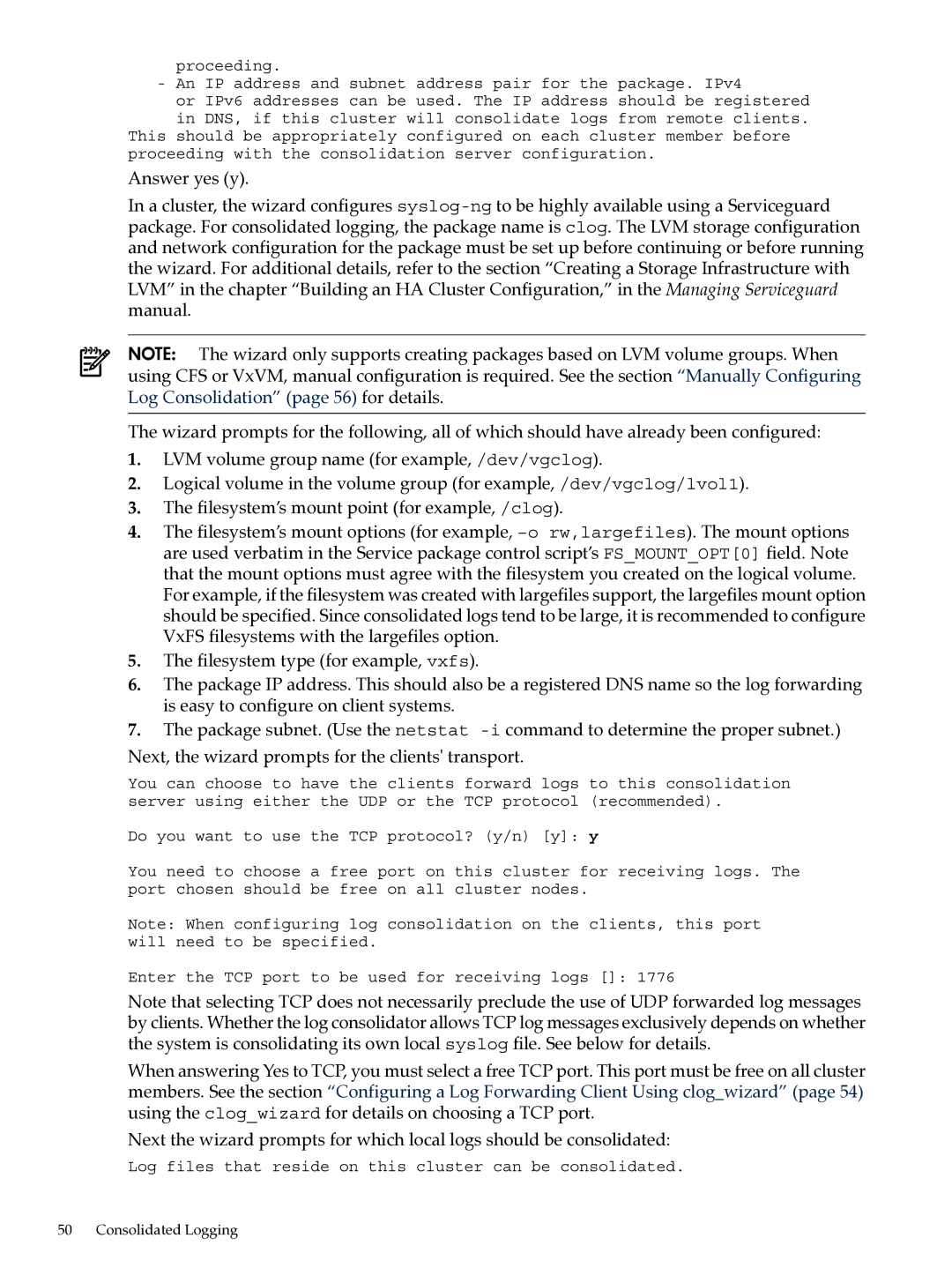
proceeding.
-An IP address and subnet address pair for the package. IPv4
or IPv6 addresses can be used. The IP address should be registered in DNS, if this cluster will consolidate logs from remote clients.
This should be appropriately configured on each cluster member before proceeding with the consolidation server configuration.
Answer yes (y).
In a cluster, the wizard configures
NOTE: The wizard only supports creating packages based on LVM volume groups. When using CFS or VxVM, manual configuration is required. See the section “Manually Configuring Log Consolidation” (page 56) for details.
The wizard prompts for the following, all of which should have already been configured:
1.LVM volume group name (for example, /dev/vgclog).
2.Logical volume in the volume group (for example, /dev/vgclog/lvol1).
3.The filesystem’s mount point (for example, /clog).
4.The filesystem’s mount options (for example,
5.The filesystem type (for example, vxfs).
6.The package IP address. This should also be a registered DNS name so the log forwarding is easy to configure on client systems.
7.The package subnet. (Use the netstat
Next, the wizard prompts for the clients' transport.
You can choose to have the clients forward logs to this consolidation server using either the UDP or the TCP protocol (recommended).
Do you want to use the TCP protocol? (y/n) [y]: y
You need to choose a free port on this cluster for receiving logs. The port chosen should be free on all cluster nodes.
Note: When configuring log consolidation on the clients, this port will need to be specified.
Enter the TCP port to be used for receiving logs []: 1776
Note that selecting TCP does not necessarily preclude the use of UDP forwarded log messages by clients. Whether the log consolidator allows TCP log messages exclusively depends on whether the system is consolidating its own local syslog file. See below for details.
When answering Yes to TCP, you must select a free TCP port. This port must be free on all cluster members. See the section “Configuring a Log Forwarding Client Using clog_wizard” (page 54) using the clog_wizard for details on choosing a TCP port.
Next the wizard prompts for which local logs should be consolidated:
Log files that reside on this cluster can be consolidated.
50 Consolidated Logging
